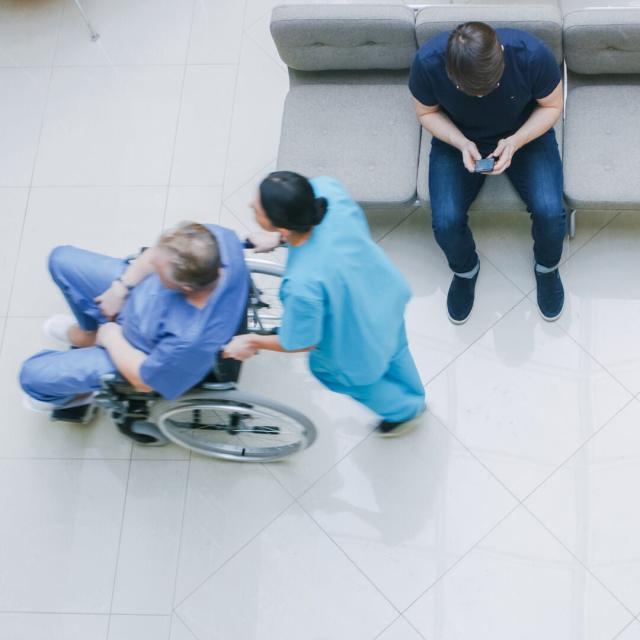With its spread-out population and shortage of healthcare professionals in rural areas, Australia has long been seen as a country that would benefit from greater telehealth availability.
Yet it wasn’t until the outbreak of COVID-19 in March 2020 that telehealth finally shifted from having limited applications in certain remote areas to a Medicare-funded option for all Australians.
Prior to the pandemic, only 19 per cent of general practices offered telehealth services, and only three per cent of Australians had used telehealth. But by March 2022, more than 100 million telehealth services had been delivered to more than 17 million Australians since the pandemic began. Of those, 83 million consultations were delivered by GPs, 11 million by specialists and five million by allied health professionals.
While physical distancing requirements no longer preclude face-to-face consultations, telehealth has remained an integral part of healthcare service delivery. It is likely to have an increasingly strong place in primary healthcare policy and practice in the future.
What is telehealth?
‘Telehealth’ refers to a broad scope of remote healthcare services, both clinical and non-clinical. It can cover services provided by nurses, pharmacists and social workers, and consultations might involve education and social support rather than only treatment or diagnostic consultations. Although the term is sometimes used interchangeably with ‘telemedicine’, that is a more specific term referring to remote clinical services, generally only by doctors.
A major goal of digital health is improving healthcare access, and telehealth is a key way to facilitate this.
How does telehealth work?
Using telecommunications, telehealth facilitates the transmission of images, voice and data between two or more sites. It can be used for:
- remote patient monitoring
- transmitting images or information between healthcare providers
- connecting a patient and a healthcare provider(s) for a consultation via an audio or video-enabled device
The history of telehealth
It might seem like a new development, but telehealth has been used for decades to help people in remote areas access health care. In fact, the Royal Flying Doctor Service has been providing radio consultations to bush areas for more than 90 years. It’s only been in recent times that a wider framework for telehealth services in remote Australian communities was established. However, this service, set up in 2016, was only Medicare funded to those who met the definition of living remotely.
“Most of the time, the way it got used was that if you were in a particular rural area, you could access a telehealth rebate for your patient if they needed to see a specialist in an urban location, and it would often be the GP sitting with the patient in their practice, and both of them together doing telehealth with a specialist,” says GP and digital health consultant Dr Amandeep Hansra. “That, to me, wasn’t really utilising the potential of telehealth.”
However, 2020 saw the government fast-track the rollout of a universal, Medicare-subsidised telehealth model for all Australians.
Telehealth now features strongly in future planning of health departments, for example the Princess Margaret Hospital in Western Australia incorporates a Burns Telehealth Service.
Impact of telehealth in Australia
Continuity of care
Access to healthcare services is associated with better health outcomes by ensuring early diagnosis and early interventions. An NPS MedicineWise report found patient consultations with GPs rose by 11 per cent in 2020 alone, which the Royal Australian College of General Practitioners (RACGP) attributed to telehealth having reduced patient barriers to care.
“Before, if you had a patient who decided to go on a trip and needed medication or to see a doctor, they would have to see somebody in another town – you can end up with this fragmentation of care, where that doctor they’re seeing may not have their past medical history or understand them,” Dr Hansra says. “Whereas now it’s been great for them to have continuity of care with their healthcare professional even when they can’t physically access them.”
Better mental health support
Telehealth has led to a significant uptake of mental health consultations. A CSIRO study of the period April to December 2020 found an 11 per cent increase in all allied mental health consultations – including clinical psychologists, registered psychologists, social workers and occupational therapists.
Impact on regional and regional health care
In 2018, pre COVID-19, around 150,000 telehealth appointments were conducted with people in rural and remote communities. By November 2020, Medicare data showed that around ten million healthcare services had been delivered to regional, rural and remote areas since March of that year.
The RACGP has stated that telehealth has had a significant positive impact on rural communities21 (RACGP, accessed July 2022).
“Our rural counterparts have ten times the difficulty [accessing mental health care] because they don’t have as many healthcare professionals in mental health in those areas,” says Dr Hansra. “But now they can access them through video calls and phone calls. A lot of these people have been through a really tough time, with the fires, floods and then COVID-19.”
Dr Hansra acknowledges, however, that the need for wider in-person care in rural communities still exists.
“There’s a role for telehealth to play but it has to be part of a whole range of services that are available,” she says.
Telehealth tips for clinicians
Give your patients choice
Dr Hansra says it’s important to give your patients options of how they want to access health care, as they can have diverse needs – and different levels of digital capabilities.
“There are patients who come from culturally and linguistically diverse backgrounds who may also have challenges in accessing technology,” she says. “I’ve worked with a lot of homeless populations who don’t have phones, and trying to do telehealth with that group is incredibly hard. So you must always ensure that there is an option available for in-person care and that you’re not just moving everything to telehealth.
Consider upskilling
It’s vital for healthcare professionals to upskill so they can make the most of telehealth platforms. Dr Hansra suggests:
- RACGP, the Australian Digital Health Agency and the Institute of Digital Health (AIDH) all run webinars and education sessions on telehealth
- AIDH has fellowships for people interested in clinical informatics
- some universities are running telehealth short courses
- digital Health CRC offers graduate certificates and short courses in clinical informatics and digital health
If you are interested in postgraduate studies:
- UTS Master of Public Health and Master of Health Services Management has a unit called "Contemporary Digital Health" which covers a range of digital health interventions
- ECU Master of Counselling has a unit "Counselling in a Digital World" which explores how counselling can be adapted for delivery across a range of online modalities
The future of telehealth
Restructured training for healthcare professionals
Dr Hansra says training programs for healthcare professionals will need to incorporate telehealth education at a greater level moving forward.
“We need to look at how we are structuring our curriculums and post-vocational training to include technology, because the future way we deliver care is going to be very different to how we delivered it in the past,” she says.
New models of healthcare delivery
Dr Hansra believes telehealth needs to evolve beyond just consultations to better meet Australian patients’ needs. She foresees a time where technology will enable a preventative model of care.
“I think the next challenge is actually redesigning how we deliver care,” she says. “There are all sorts of extra things we could be doing, things like remote patient monitoring – so having a patient monitored at home and preventing issues before they happen, and being able to reach out proactively to that patient.”
Better integration of digital health
Ideally, Dr Hansra says, she’d like digital health to be as seen as part of health care overall rather than a separate entity.
“In the future, I might be delivering care in person, then the next patient is a phone call, the next patient is a video call, the next patient is me looking at some remote patient monitoring data, or some wearable data,” she says.
“I think we need to be living in a hybrid world where we’re actually providing patients incredible choice and opportunity to engage with the health sector on their terms. And that’s where I’d like us to move to – where we as clinicians support our patient preferences.”
Explore our range of online postgraduate health courses including counselling, leadership, mental health, nursing, psychology and public health to find one that suits you.






















